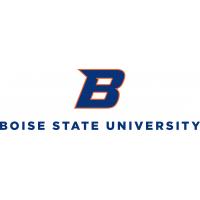Artemisia tridentata (big sagebrush) is an ecologically important shrub found in western North America. In vitro techniques can be applied to big sagebrush for the purpose of studying gene function, genotypic and phenotypic plasticity studies, cloning, genotypic preservation, and restoration. I performed experiments to develop an indirect organogenesis protocol to regenerate whole Wyoming big sagebrush plants from leaf explants. Callus formation frequency was 88% (±4.0%) in leaf explants cultured on medium containing 0.5 mg/l BAP and 1.0 mg/l NAA. Shoot formation frequency was variable between replicates and was the highest when callus tissue was cultured on medium containing 1.5 mg/l BAP and 0.1 mg/l NAA, 37% to 80%. I tested several auxin treatments to induce root formation and concluded the best to be 0.5mg/l IBA, which yielded 42% to 60% rooting. Taking into account all these variables, I estimate the total regeneration efficiency to range between 14% to 43% on this set of treatments. This protocol was also applied to basin big sagebrush. Callus formation was 100% in leaf explants. Shoot formation was 34% (±14.6%), but shoots exhibited a hyperhydric phenotype and were not transferred to root induction medium. The in vitro regeneration protocol developed is a crucial element that would be required to transform big sagebrush using molecular approaches. Experiments were also conducted to determine the feasibility of shoot tip and nodal cuttings to develop adventitious roots in vitro. This method can provide genetically identical material much faster than in vitro regeneration. Adventitious root formation in Wyoming big sagebrush cuttings cultured on two media types was inconsistent, ranging from 10% in some experiments to 80% in others. Limited success was achieved in nodal cuttings cultured on modified MS medium containing auxin and cytokinin 12.5% (±5.6%). No root formation was achieved in mature plant tissue collected in the field. Results indicated that genotypic influences were likely more responsible for variations in rooting than the medium or vessel conditions tested. Cloning experiments in basin big sagebrush further supported this notion. All material for these experiments came from half-sibling individuals that was maintained separately throughout the course of the experiments. Some half-siblings formed no adventitious roots on any treatments tested whereas others had high rates of formation on all treatments. Further studies, utilizing exogenous PGRs, such as auxins, may provide more successful adventitious root formation in shoot tips from both big sagebrush subspecies.
Data and Resources
| Field | Value |
|---|---|
| Modified | 2022-07-07 |
| Release Date | 2022-07-07 |
| Publisher | |
| Identifier | 2e6be979-314f-476c-9419-a56c5570c00b |
| License | notspecified |
| Public Access Level | Public |

